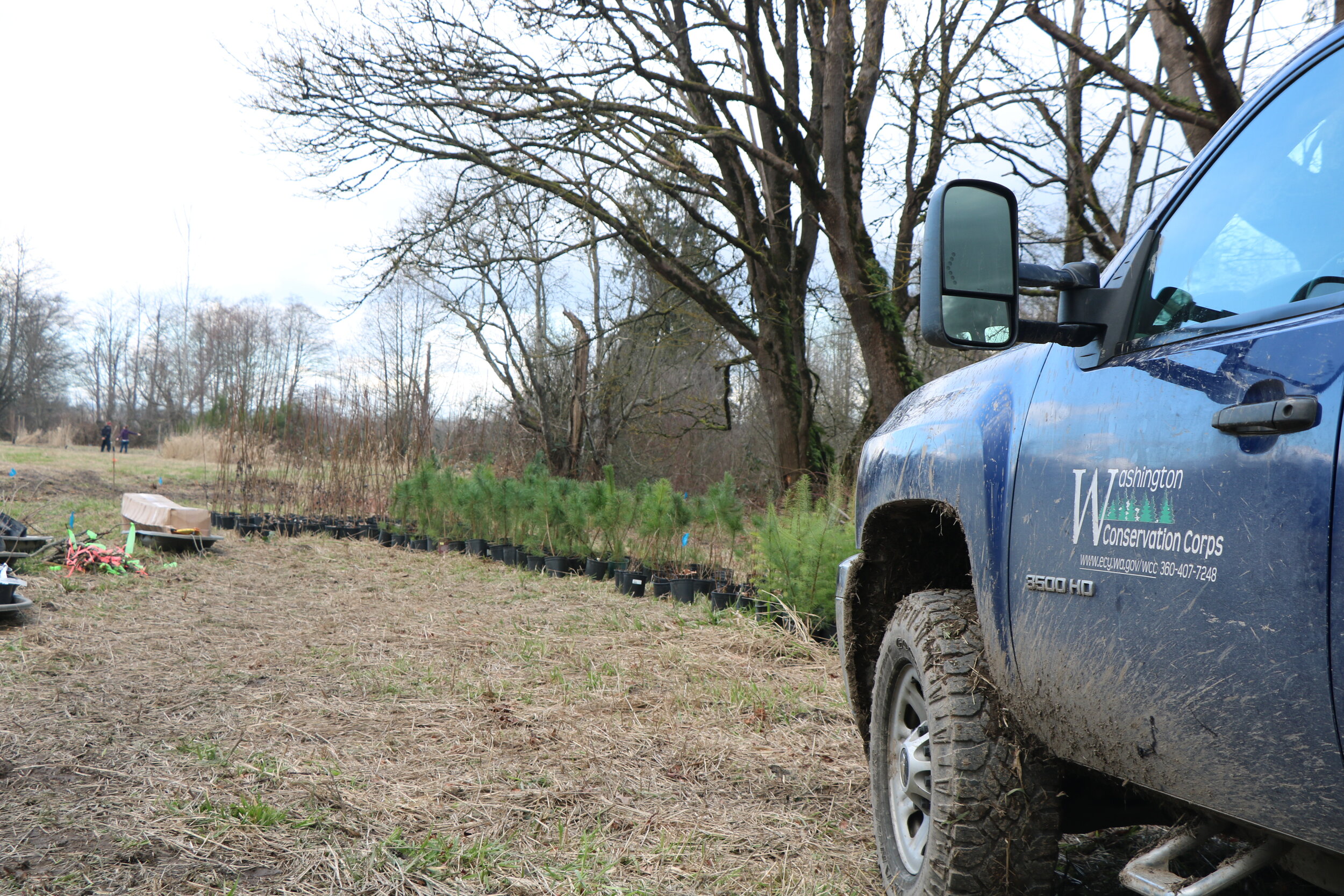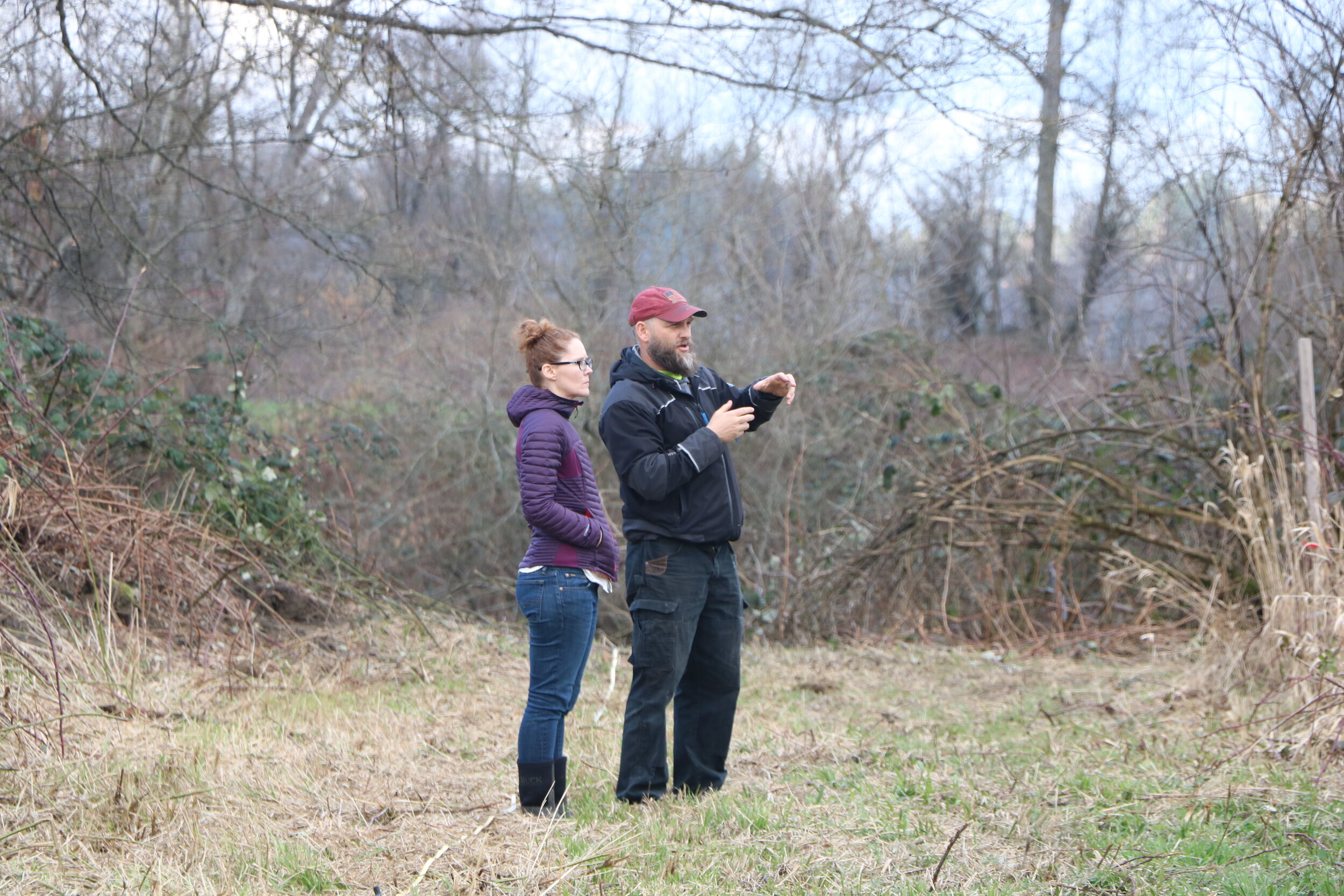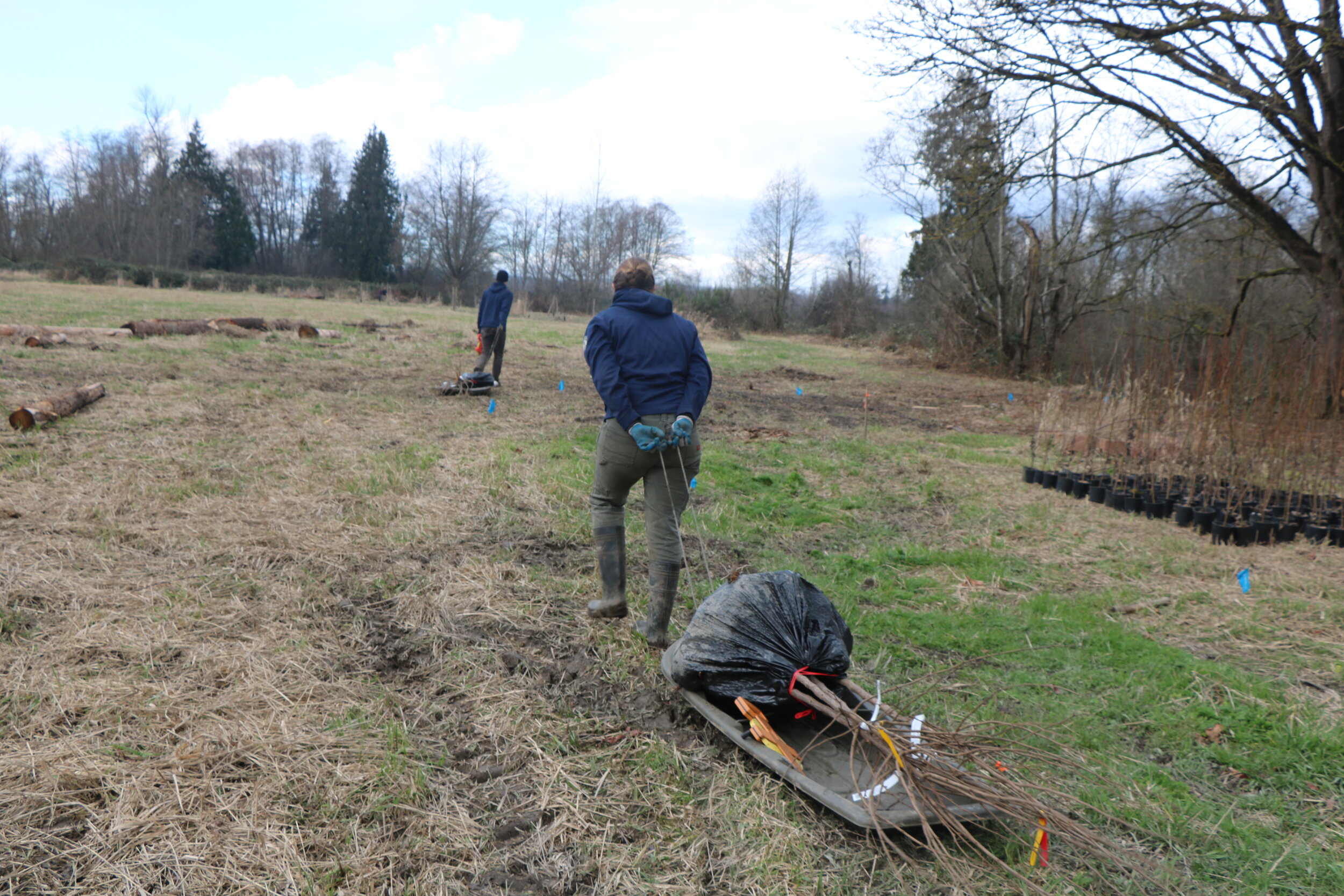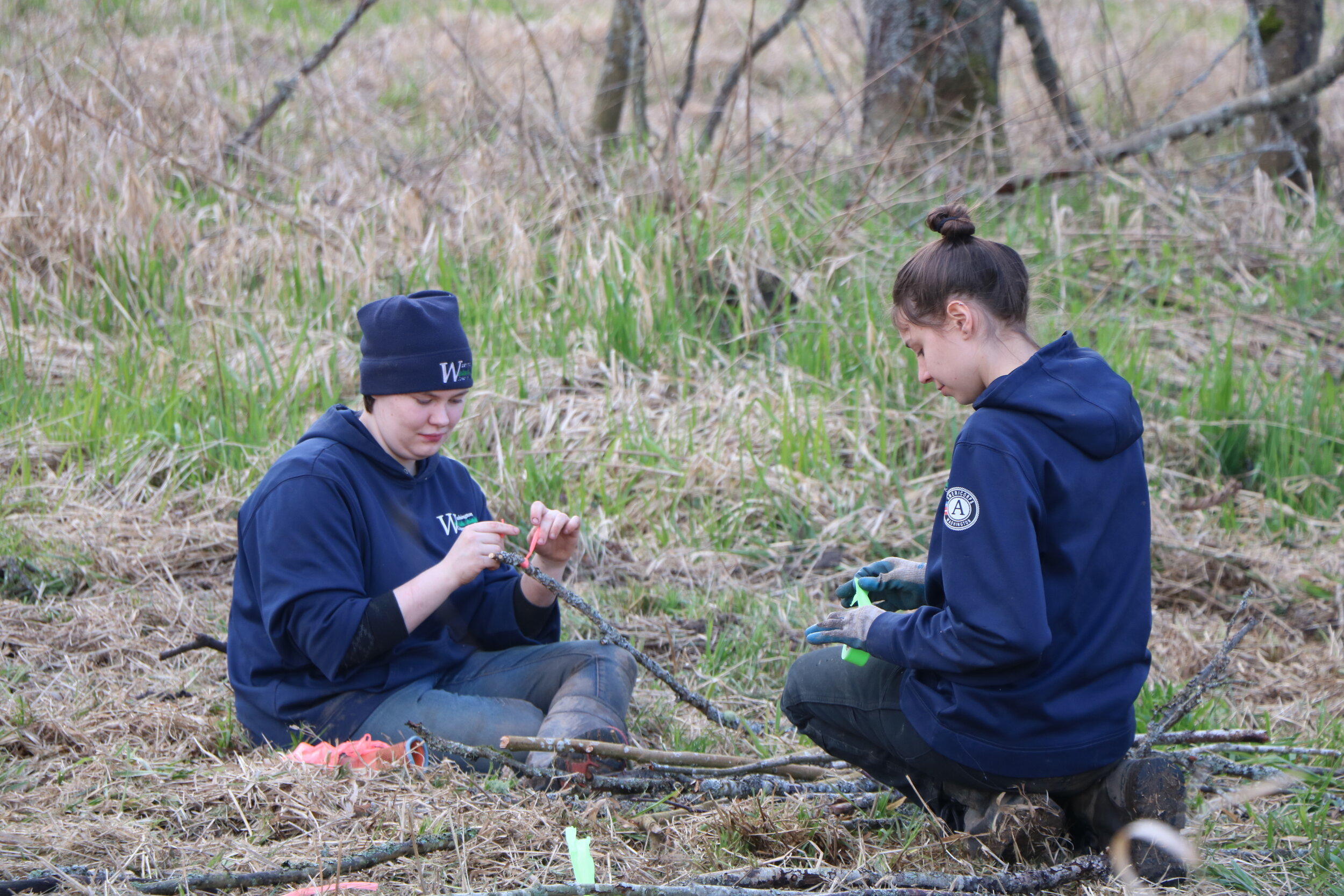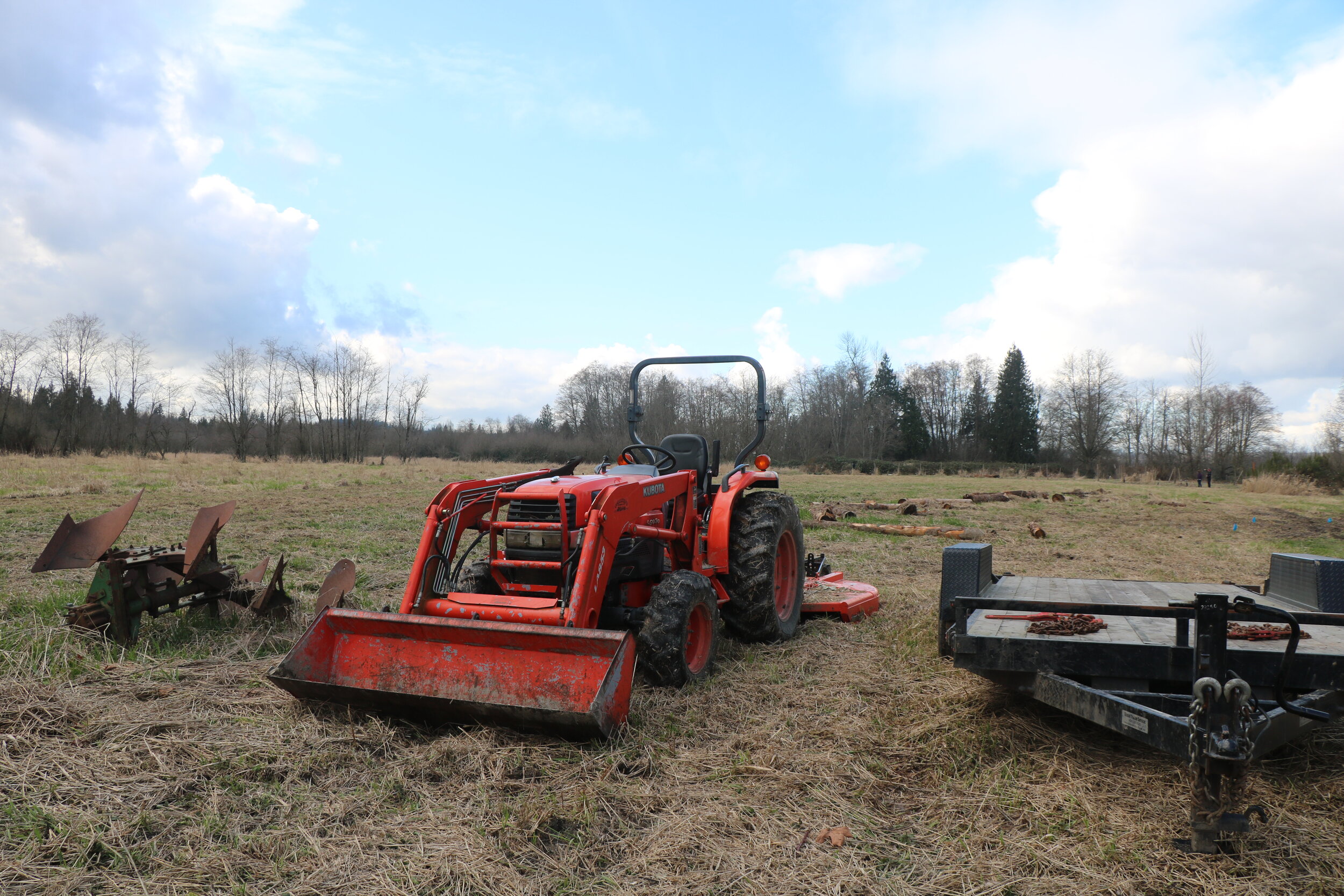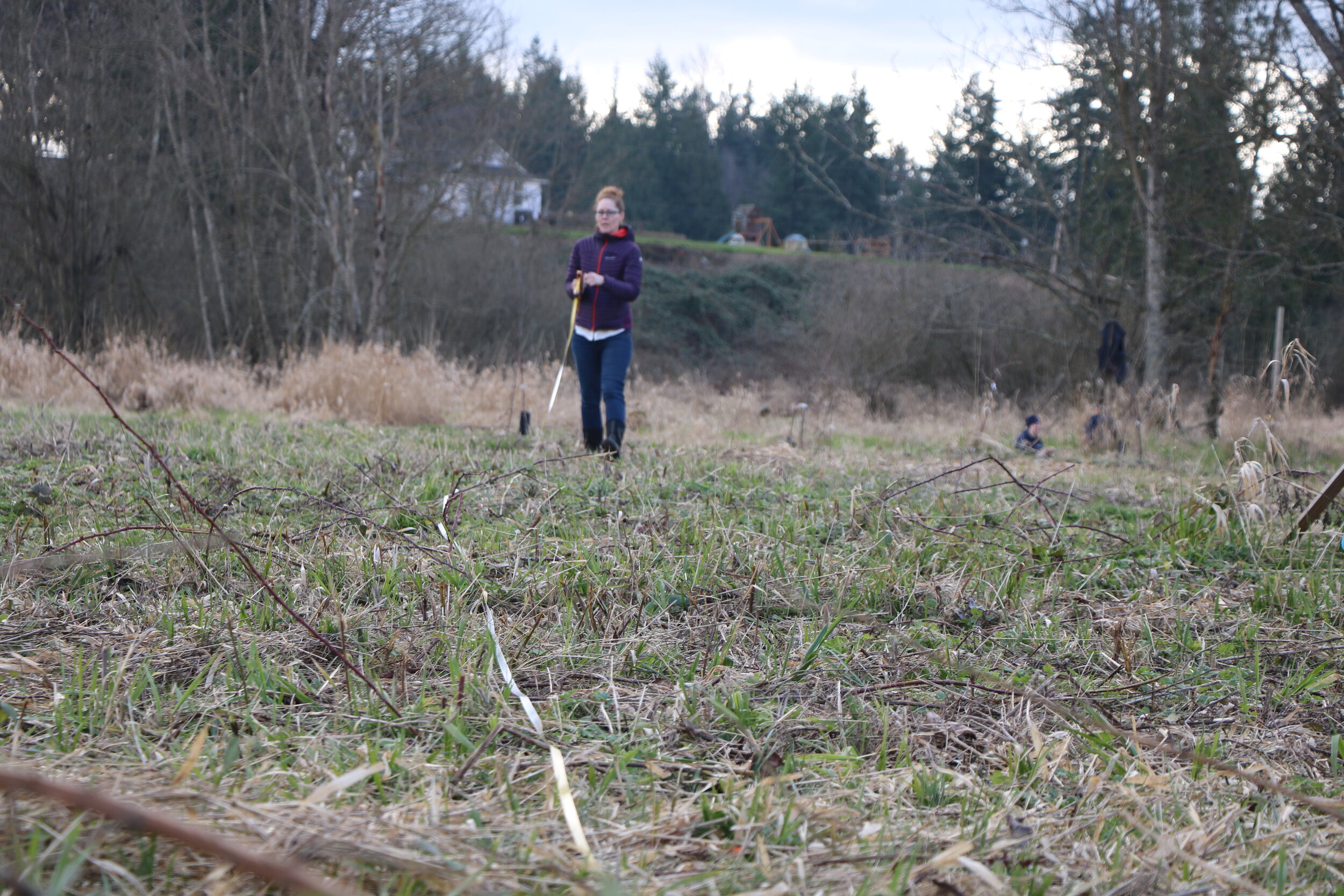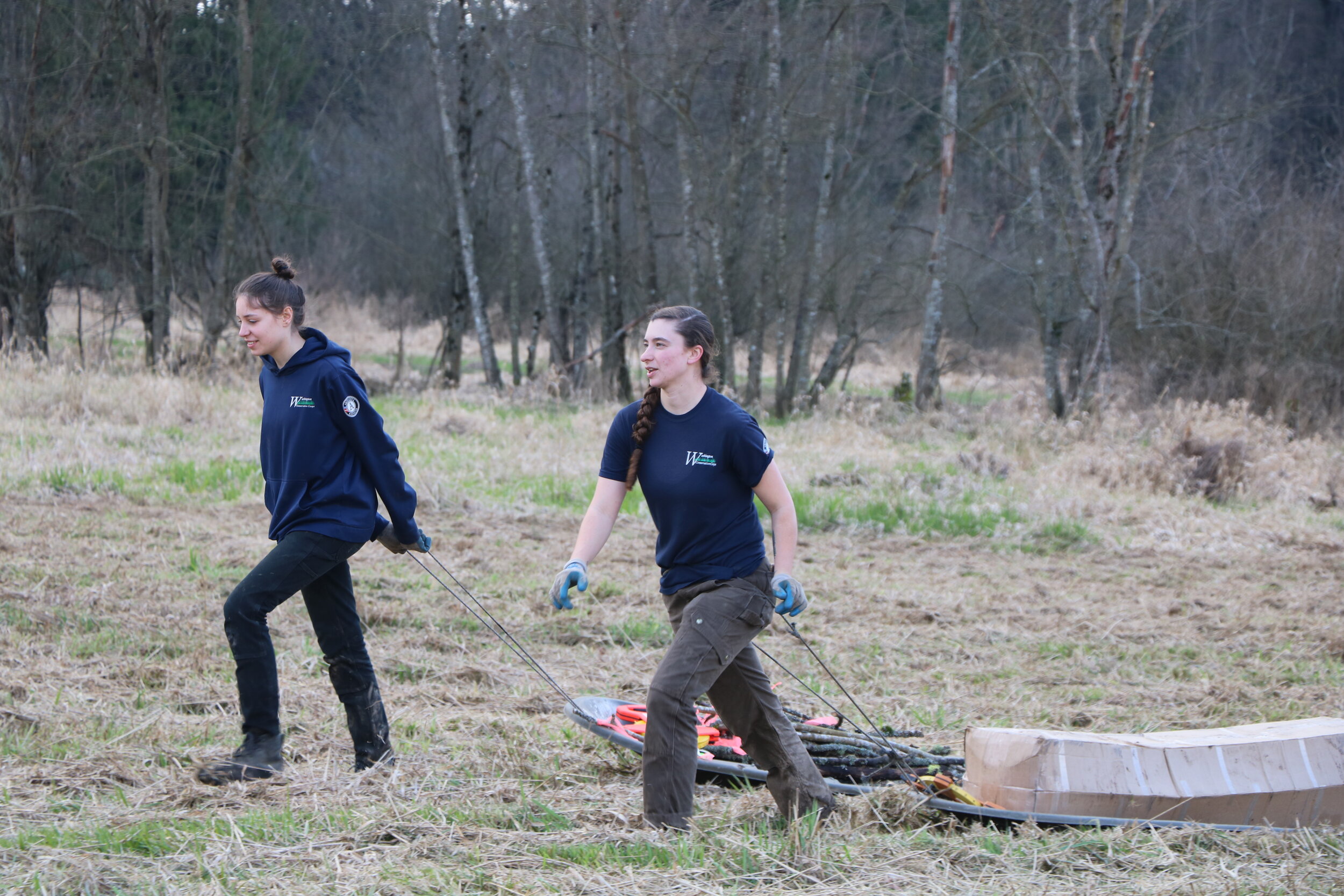Restoring Habitat, Teaching New Generation at Arlington Christian School
/As far as hands-on learning goes, Arlington Christian School is on the ball.
Russ Nuss, long-time volunteer and creator of Arlington Christian’s after-school agriculture program, knows the value in teaching younger generations how to work the land. With a background in small farming and six kids of his own, he began advocating for more real-life learning opportunities in agriculture several years ago.
In 2019, the school approached Snohomish Conservation District (SCD) about an agriculture project on its 20-acre property which has Portage Creek running through it. After walking the grounds and chatting about the potential to re-engage with agricultural land that used to be a dairy farm, Carrie Brausieck, natural resource planner and agroforester, suggested something a little different: a “food forest.”
Longtime volunteer Russ Nuss and the tractor he purchased for Arlington Christian School.
A food forest is one example of agroforestry, a type of farming that is gaining in popularity around the world. In this case, it will combine the benefits of riverbank restoration with agriculture to create a natural, multi-beneficial system. The result? Berries, fruits, and nuts, along with rows of native plants that will jumpstart the land into becoming a sustainable, working ecosystem.
SCD Habitat Project Coordinator Elyssa Kerr is working with Brausieck to harmonize her food forest with a “working buffer,” a system of native plants that will improve the water quality of the river, benefit the habitat and create a multi-functional system of food production.
“We’re so dependent on the food chain, how can we become more independent? How can we harken back to yesteryears?” Nuss asked. “[This project] is a great educational experience for our students who live in our techy, X-Box age.”
Students will see agroforestry in action as the trees and shrubs gradually come into maturity. Walnuts, paw paw, pears, elderberries, and other food-bearing plants will be harvested by the students and sold in fundraisers.
Since this is a space that has been overgrown with blackberry and reed canary grass, students haven’t had the chance to interact with it. But once the project is finished, Arlington Christian will use it to design classes around habitat protection, restoration, agriculture and the importance of salmon in our ecosystem.
Nuss, Brausieck and Kerr have been working hand-in-hand to map the property and planting areas. On the other end of it, the Washington Conservation Corps (WCC) crew will be carrying out the work once planting begins in the fall of 2020.
Learning Something New
Wirth (left) and Supervisor Vandenberg (right) pulling their supplies along the property with sleds.
SCD has been partnering with the WCC since 2013 as a way to prepare young adults for the environmental field. This year’s crew started last fall and has weathered snow, mud and countless days of rain.
Lily Wirth, the safety manager of the crew, has still found some fulfillment from the job despite the challenging weather.
“A day’s work in one area has an impact on a lot more,” Wirth said. She grew up in Seattle but now lives in South Whidbey, taking the ferry every day to work. She wishes people understood how great their impact is on the environment, good or bad.
“I want people to know the importance. People look at a blackberry bush and don’t even think about how it’s an invasive plant,” she said.
While Wirth has surprised herself by the kind of work she’s had the ability to do, her crew leader Danielle Vandenberg values the opportunity to train her crewmembers.
A bit of an old-timer from having worked on a crew with King County before joining with SCD, Vandenburg has a different perspective on the job: she’s proud of her crew and their hard work.
“It’s fun to see them develop from the beginning of the year to now,” she said.
But Vandenberg is still learning—this is the first project she’ll be working on that includes a food forest. To prepare the land, it’s been a combination of removing walls of blackberries along the stream and property, as well as carefully following the direction of Brausieck on identifying and planting food-bearing plants.
Brausieck and Nuss map out the property to direct the wcc crew on where to plant.
Planting Seeds for the Future
Brausieck calls this sort of project an “investment.” Many of these plants won’t mature and bear fruit for several years. To witness the full yield of their hard work, it will be almost a decade- this generation will be well out of high school, or nearing the end of it.
Still, that’s what conservation is an investment towards the future. By working together with community members of all ages, even the early stages of habitat restoration can be heavy with fruit.
Nuss looks forward to teaching his students by using the land as an example.
“I would love to see kids be educated by this,” he said. “There is such an abundance to experiencing life, and nature is our way to experience that abundance.”
If you would like to learn more about agroforestry, its potential to diversify your operation, and how you can start a project on your property, visit our Agroforestry program page or email agteam@snohomishcd.org.
This project is funded in part by Washington State Department of Ecology

